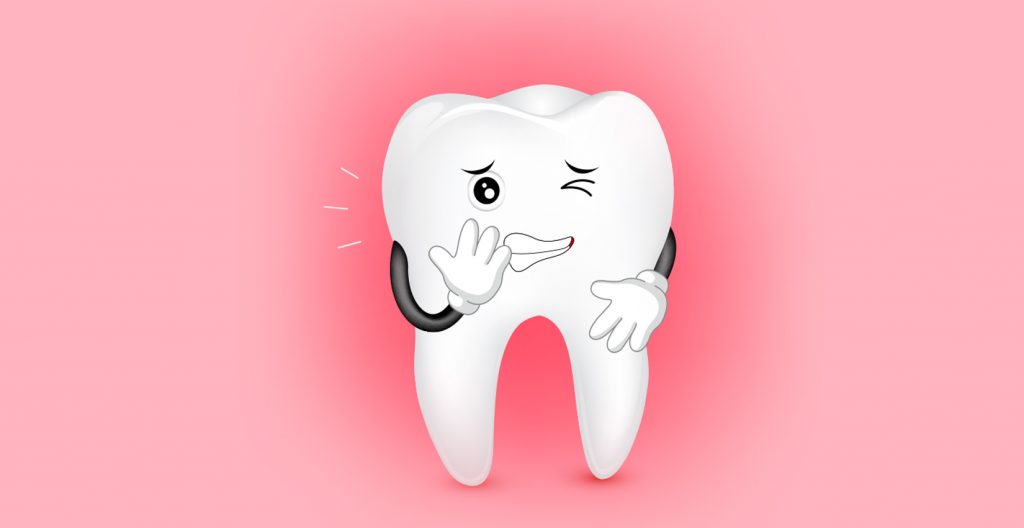In the event of a dental emergency, it is crucial to know how to care for the situation as quickly and efficiently as possible. Continue reading to learn more about some of the most common dental emergencies and their corresponding first aid.
Blunt Force Trauma
It is the unfortunate truth that accidents happen. If you have fallen or had an accident that left you with some sort of blunt force trauma to your mouth and are experiencing loose, lost, or broken teeth, you will want to contact your dentist right away.
In the case that your injuries are extensive, you may want to visit the emergency room. If not, you should head to see your trusted dental professional as quickly as you possibly can. Your dentist will conduct an examination to determine what type of treatment you need.
Lost Tooth
If you have lost a tooth, it is crucial that you retrieve the tooth and keep it moist prior to your emergency dental appointment; this will greatly improve the chances of successful reinsertion. To keep your tooth moist, you can place the tooth:
- Inside of a glass of milk
- Back inside its socket
- Between your cheek and gum
Be sure to thoroughly clean the tooth before placing it back inside the mouth. Your dentist will conduct an exam to determine if they can successfully re-insert your tooth. If the tooth can not be re-inserted, your treatment options will be discussed with you. These options typically include:
Pain
Constant or recurring pain is an indication that you should see your dentist right away. The treatment you need depends on the root cause of the pain; there is a wide range of factors that may potentially cause pain inside the mouth.
Prior to your dental visit, you can take over-the-counter pain medication to manage your pain levels, and it’s also ideal to rinse with warm salt water; this will help keep the area clean.
Your dentist will take an x-ray of the target area and conduct a thorough examination to discover the cause of your pain. In conclusion, he or she will then work with you to design a treatment plan to get you out of pain.
Dental Infection
Infection may at first be hard to identify. However, it may present itself with the following symptoms:
- Unpleasant taste or smell in the mouth
- Fever
- Swelling
- Sharp pain
- Dull aching pain in the jaw
- Dental abscess
Infection typically accompanies decay or damage to the tooth. Your dentist will prescribe you a round of antibiotics and clear the infection before administering any restorative treatment.
Beginning treatment while an infection is present places the patient at an increased risk of sepsis. Sepsis is an infection of the blood.
Infection also tends to make it difficult for local numbing agents to take effect, which may make restorative treatment incredibly uncomfortable for the patient.
Bleeding
If you have noticed bleeding after you brush or floss, it is important that you do not ignore the issue. It is important to keep in mind that bleeding in the mouth is never normal, and should always be investigated. In fact, this is a common indication of gingivitis or its progressed stage of gum disease. While gingivitis and gum disease are not technically dental emergencies, they are serious conditions that should receive professional attention as soon as possible.
It is always best to have bleeding that accompanies blunt force trauma or other accidents immediately examined by your dentist. As previously mentioned, if the injury is extensive, you may want to visit the emergency room first.
Chipped or Broken Tooth
If biting into something hard or sticky has left you with a chipped or broken tooth, you will want to have the tooth examined by your dentist right away.
A small break is usually repaired with a dental filling or bonding. Large breaks and cracks may require more extensive treatment. This includes a root canal, dental crown, or tooth extraction. An x-ray and thorough examination will help determine what type of treatment you need.
Lost Dental Crown or Bridge
While crowns and bridges are permanently cemented in the mouth, it is typically recommended to avoid using them to chew hard or sticky foods. Doing so may potentially break or loosen the crown or bridge, which can allow harmful bacteria to accumulate beneath the cap.
If your crown or bridge has come loose from its place in the mouth, it is important to hold onto it and make an appointment to see your dentist right away. Keep in mind that the natural tooth structure beneath your crown or bridge is shaved down; the protective outer layer of enamel has been compromised. This leaves the tooth exposed to damage or decay.
Bring your crown or bridge with you to your emergency dental visit. Your dentist will complete an exam to confirm that it can be cemented back inside the mouth. When there is decay or damage in the underlying natural tooth structure, the crown or bridge may fail. If this is the case, your dentist will discuss your options for treatment thoroughly with you.
Reza Dental Care: Emergency Dentist in South Gate, CA
It’s crucial to know that you can depend on care from an experienced dental professional; especially during a dental emergency.
Here at Reza Dental Care, we are proud to offer comprehensive emergency dental services in our South Gate office. No matter the dental emergency you are experiencing, we are here to help.
Reza Dental Care is here to help you maintain a healthy and beautiful smile; we are proud to provide comprehensive dental and orthodontic care in South Gate, California. Searching for the “best dentist near me”? Our team of professionals is here for you. For more information about dental emergencies and first aid or to schedule an appointment in our South Gate dental office, book an appointment online or give us a call at 323-457-8787.

 Available For Emergencies
Available For Emergencies